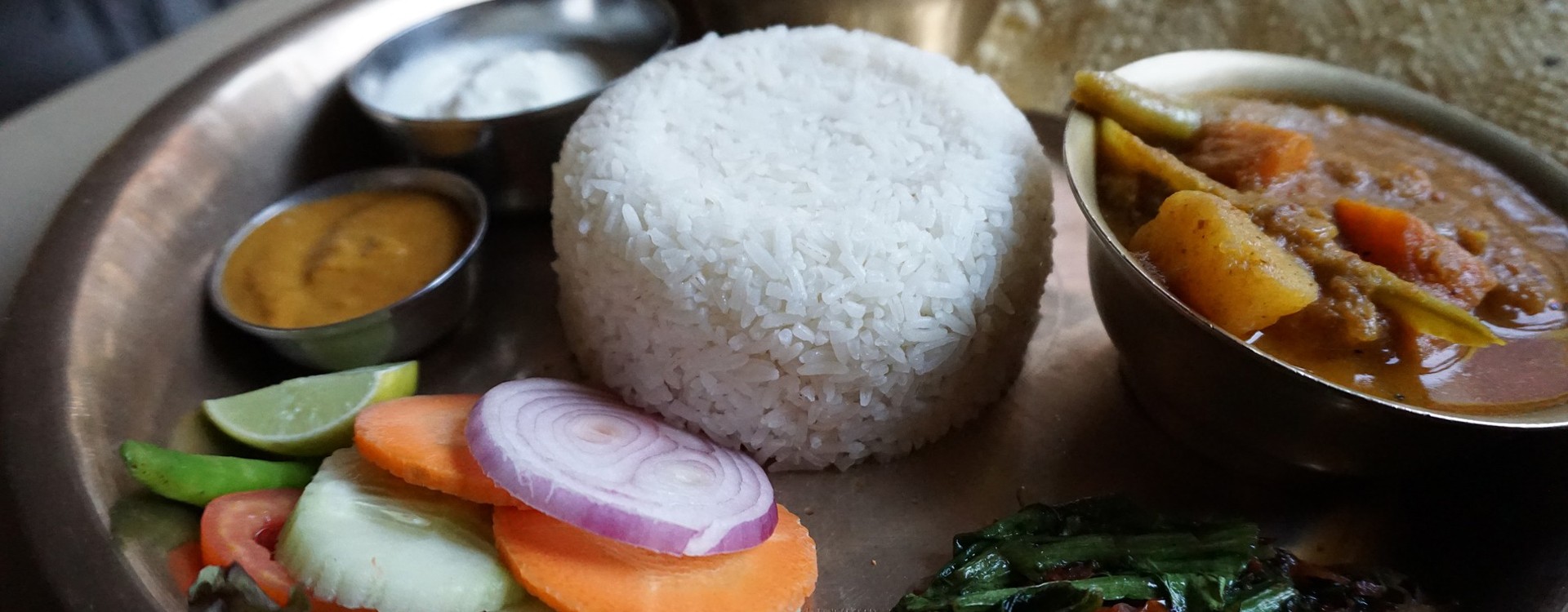Nepalese Food Culture
Nepalese Food Culture is a bit different than around the Globe.
Many Nepalese do not feel that they have eaten a real meal unless it has included a sizable helping of rice. Most People eat a large rice meal twice a day, usually at midmorning and in the early evening. Rice generally is served with Dal (A Lentil Dish) and Tarkari (A Cooked Vegetable).Often, the meal includes a Achar( Pickle)made of a fruit or vegetable. In poorer and higher-altitude areas, where rice is scarce, the staple is dhiro, (A thick mush made of corn or millet). In areas where wheat is plentiful, rice may be supplemented by flat Roti (Bread).Most families eat from individual plates while seated on the floor. Though some urbanites use Western utensils, it is more common to eat with the hands.
Conventions regarding eating and drinking are tied to caste. Orthodox high-caste Hindus are strictly vegetarian and do not drink alcohol. Other castes may drink alcohol and eat pork and even beef. Traditionally, caste rules also dictate who may eat with or accept food from whom. Members of the higher castes were particularly reluctant to eat food prepared by strangers. Consequently, eating out has not been a major part of the culture. However, caste rules are relaxing to suit the modern world, and the tourist economy is making restaurants a common feature of urban life.
Here are some interesting facts about food culture in Nepal
- The Nepalese consider that food and eating are all divine and food should be eaten in a joyful manner.
- The main staple diet of most Nepali people is Dal,Bhat and Tarkari - translated as Lentils, Rice and Curried vegetable. A meal of those three is generally eaten twice a day.
- Most Nepalese use their fingers to eat and using spoons and forks is not common, especially when you are having Daal Bhat the staple Nepalese diet. Use your right hand to eat and deal with food. Nepalese use their left-hand to wash themselves in the toilet.
- Cows are worshipped in Nepal, and considered the axis of the agricultural economy. Therefore their slaughter is forbidden and Nepalese do not eat beef.
- The meat most widely consumed in Nepal is the one of male goats and sheep.
- The kitchen in Hindu households is considered as sacred and usually faces south.
- There are several festivals throughout the year where Nepali Hindus celebrate by fasting.
- In most part of country, especially rice-growing areas, meals are eaten twice a day, about 10am and 8pm.
- In between the two big meals, snacks are generally eaten, such as bread, chura (beaten rice), roti (flat bread), curried vegetables, milked tea and other snacks.
- Eating is always in the home and going to a restaurant is unheard of except in cities.
- In the hills where rice is expensive, the Nepalese substitute rice for dhedo, which is a mixture of flour and water or butter.
- The most common custom in Nepal is jutho, which translates as “contaminated” and requires people not to touch others’ food and drink with either their hands or their spoon. When drinking water for example, Nepalese people will not touch the bottle or glass to their lips so that others can drink from it also.
- Another custom is the idea that the foot is ritually dirty and therefore stepping over food or pointing the soles of your feet is disrespectful. Don’t eat off someone else’s plate or offer anyone food you have taken a bite out of.
- Most Nepalese people won’t eat meat every day, if they are not vegetarian and if they can afford it meat will be prepared and enjoyed during festivals.
